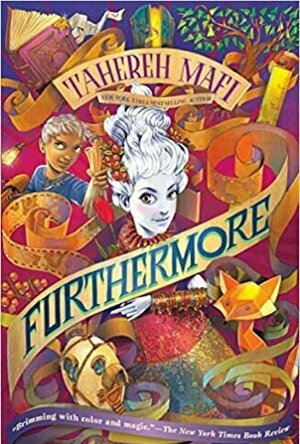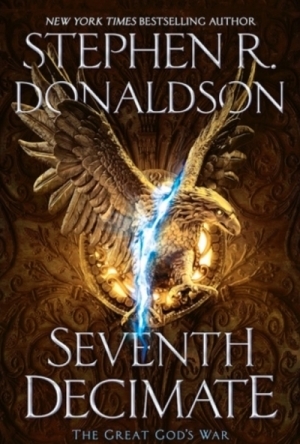Search
Search results
Kyera (8 KP) rated Scarlet (The Lunar Chronicles, #2) in Books
Jan 31, 2018
This is the fantastic sequel to Cinder, the first book in the Lunar Chronicles. Marissa Meyer does a brilliant job of introducing us to a new duo that will be featured in the book, while intricately weaving their story in with the characters that we already know and love. In case you weren't aware Scarlet is a retelling of the Little Red Riding Hood fairytale. As this is the second book in the series, there will be plot points referenced from the first book and may spoil you. I suggest you read Cinder before you read this review.
Scarlet is incredibly different from Cinder, our main character from the first book. With fiery hair and a temper to match, Scarlet is an accomplished pilot and a force to be reckoned with. When her grandmother goes missing, she will stop at nothing to get her back - even if that means teaming up with a street fighter who has never had tomatoes before... named Wolf.
There is a dichotomy in the portrayal of Wolf as he is seen as violent and angry during a fight, but so innocently curious and nervous with Scarlet. She introduces him to the wonders of fresh produce and his reaction is so precious, he just reminds me of a puppy in those moments. I can't say that I like him more than Kai, but he definitely grows on you over the course of the book.
It was nice to see Kai in his role as the Emporer of the Eastern Commonwealth. In the first book, he was only just coming to terms with the drastic change in his circumstances and now he must be the leader his people need. You watch as he struggles to reconcile the needs of his people with the desires of his heart. Completely untested as a ruler, he does what he can to protect his people from Queen Levana but worries that it will not be enough. It was heartbreaking to see the turmoil and know that he will only face more difficult decisions in the future.
Cinder's world was completely turned upside down at the end of the first novel. As a result, she is on the run and teams up with <i>Captain</i> Carswell Thorne. His utter enamorment with himself is hilarious and plays really well off of Cinder's more serious, yet still sarcastic personality.
I really enjoyed seeing the world expand a bit more as we learned about other locations in the Earthen Union and spent time in France. We were given more of Cinder's history and the groundwork was laid for plot points and characters in the future books. This was a great story, but I can't say much else without spoilers - so just go read the series, you won't regret it.
Scarlet is incredibly different from Cinder, our main character from the first book. With fiery hair and a temper to match, Scarlet is an accomplished pilot and a force to be reckoned with. When her grandmother goes missing, she will stop at nothing to get her back - even if that means teaming up with a street fighter who has never had tomatoes before... named Wolf.
There is a dichotomy in the portrayal of Wolf as he is seen as violent and angry during a fight, but so innocently curious and nervous with Scarlet. She introduces him to the wonders of fresh produce and his reaction is so precious, he just reminds me of a puppy in those moments. I can't say that I like him more than Kai, but he definitely grows on you over the course of the book.
It was nice to see Kai in his role as the Emporer of the Eastern Commonwealth. In the first book, he was only just coming to terms with the drastic change in his circumstances and now he must be the leader his people need. You watch as he struggles to reconcile the needs of his people with the desires of his heart. Completely untested as a ruler, he does what he can to protect his people from Queen Levana but worries that it will not be enough. It was heartbreaking to see the turmoil and know that he will only face more difficult decisions in the future.
Cinder's world was completely turned upside down at the end of the first novel. As a result, she is on the run and teams up with <i>Captain</i> Carswell Thorne. His utter enamorment with himself is hilarious and plays really well off of Cinder's more serious, yet still sarcastic personality.
I really enjoyed seeing the world expand a bit more as we learned about other locations in the Earthen Union and spent time in France. We were given more of Cinder's history and the groundwork was laid for plot points and characters in the future books. This was a great story, but I can't say much else without spoilers - so just go read the series, you won't regret it.
Ross (3284 KP) rated The Seventh Decimate : The Great Gods War Book One in Books
Jan 22, 2018
The main character (2 more)
The storyline
Everything else
1 dimensional short story that goes on too long
*** Disclosure: I received a free copy of this from NetGalley in exchange for an honest review ***
I haven't previously read any of Donaldson's work, though my Dad's unwieldy omnibus edition of the First Chronicles of Thomas Covenant the Unbeliever has been in my pile for some time now.
The storyline follows Prince Bifalt journeying to find the sorcery that can undo his country's current plight (they appear to have lost all magical abilities, key to staying in their generations old battle with neighbours). It starts off in the moments before battle, with the prince teaching his comrades about the history of the battle in a very hard to believe section of "here's the backstory but isn't it good that I wove it into the dialogue". We are introduced to his brothers at arms and each of their quirks and peccadillos, which turns out to be a waste as they pretty much all die within the next 100 pages, whether they like horses or are womanisers or not.
The opening action is very gripping and filled me with hope for the book to follow, as Bifalt and his companions lead a special mission to assassinate the enemy's sorcerers with their previously unreleased rifles.
Thereafter the action pretty much dries up. What follows on Bifalt's quest is a nonsense 200 pages of journey through the back country with a thoroughly detestable character who suspects everyone except those who actually have a reason to be his enemy.
After days in the desert, he meets a nonsensical caravan of misfits that he manages to ostracise himself from by being himself.
What follows is a tedious nonsense of journey, discussion, treachery, intrigue and just general nonsense.
Donaldson has an annoying habit of occasionally following a line of dialogue with "What he meant was" to show what the prince is actually trying to ask but didn't. This gets very annoying very quickly.
The conclusion of the story can only be described as relief that it is over, no great revelations, no climactic sequence or discovery, just "that's that sorted then now send to publishers".
Having recently read a number of fantasy books told from numerous viewpoints and covering really epic storylines, to come to such a linear, one dimensional tossed away story as this from someone who is supposed to be one of the greats of the genre, it really was an incredible disappointment.
I shan't be reading the second or third books of the trilogy, and Thomas Covenant has just slipped down my pile a bit.
I haven't previously read any of Donaldson's work, though my Dad's unwieldy omnibus edition of the First Chronicles of Thomas Covenant the Unbeliever has been in my pile for some time now.
The storyline follows Prince Bifalt journeying to find the sorcery that can undo his country's current plight (they appear to have lost all magical abilities, key to staying in their generations old battle with neighbours). It starts off in the moments before battle, with the prince teaching his comrades about the history of the battle in a very hard to believe section of "here's the backstory but isn't it good that I wove it into the dialogue". We are introduced to his brothers at arms and each of their quirks and peccadillos, which turns out to be a waste as they pretty much all die within the next 100 pages, whether they like horses or are womanisers or not.
The opening action is very gripping and filled me with hope for the book to follow, as Bifalt and his companions lead a special mission to assassinate the enemy's sorcerers with their previously unreleased rifles.
Thereafter the action pretty much dries up. What follows on Bifalt's quest is a nonsense 200 pages of journey through the back country with a thoroughly detestable character who suspects everyone except those who actually have a reason to be his enemy.
After days in the desert, he meets a nonsensical caravan of misfits that he manages to ostracise himself from by being himself.
What follows is a tedious nonsense of journey, discussion, treachery, intrigue and just general nonsense.
Donaldson has an annoying habit of occasionally following a line of dialogue with "What he meant was" to show what the prince is actually trying to ask but didn't. This gets very annoying very quickly.
The conclusion of the story can only be described as relief that it is over, no great revelations, no climactic sequence or discovery, just "that's that sorted then now send to publishers".
Having recently read a number of fantasy books told from numerous viewpoints and covering really epic storylines, to come to such a linear, one dimensional tossed away story as this from someone who is supposed to be one of the greats of the genre, it really was an incredible disappointment.
I shan't be reading the second or third books of the trilogy, and Thomas Covenant has just slipped down my pile a bit.
Let me start off by saying that I love Marissa Meyer's writing so much, but this book wasn't as good for me as The Lunar Chronicles.
This was a really cute and quirky book with so many puns! I loved all of the puns about baking, they gave me life. Especially since I love puns and I love baking, so putting those two things together made me so happy!
This had a very interesting story, one we all know the end of, just not how the story will get to that point. If you have read or even know of Alice in Wonderland, you know that the Queen of Hearts is a villain, so it was interesting to see how she got to be that way. I am always a little hesitant to read the villain backstories because a lot of times, authors will make them out to be the heroes and completely go against what the audiences know about these beloved villains. While Meyer does have some instances of this, she also is able to build up the story enough to the point where it may be believable.
So there are going to be some plot spoilers in this paragraph, so if you do not want to read them, skip to the next paragraph! Okay, so the plot goes like this: Catherine doesn't want to be queen, she wants to bake, but the King of Hearts, as well as her parents, want her to be the queen. Cue the Joker, Jest, who is the wrong guy to fall for, but she does it anyway which eventually gets him killed and will make Cath want revenge and become the killer we know her as. There were a lot of moments throughout the plot that I was not as engaged with because they felt like they had been too much. Of course Cath would fall for Jest and of course a man would be her turning point. I was not the biggest fan of those aspects of the story. I wanted her to have more agency in why she becomes the Queen of Hearts, not just that she wants to use her power to avenge her lost love.
There was a prophecy in this book, I won't say what it was, but I will say that it wasn't my favorite because it takes any and all tension out of the story.
I loved the play on names from Meyer. Hatta being the Mad Hatter and Haigher being the March Hair, loved it!
The characters were pretty interesting, but they weren't as gripping or memorable as I would have like them to be.
I usually adore Marissa Meyer's books, but this one fell a little flat for me. Overall, it was enjoyable, but I am not sure if I would read it again.
This was a really cute and quirky book with so many puns! I loved all of the puns about baking, they gave me life. Especially since I love puns and I love baking, so putting those two things together made me so happy!
This had a very interesting story, one we all know the end of, just not how the story will get to that point. If you have read or even know of Alice in Wonderland, you know that the Queen of Hearts is a villain, so it was interesting to see how she got to be that way. I am always a little hesitant to read the villain backstories because a lot of times, authors will make them out to be the heroes and completely go against what the audiences know about these beloved villains. While Meyer does have some instances of this, she also is able to build up the story enough to the point where it may be believable.
So there are going to be some plot spoilers in this paragraph, so if you do not want to read them, skip to the next paragraph! Okay, so the plot goes like this: Catherine doesn't want to be queen, she wants to bake, but the King of Hearts, as well as her parents, want her to be the queen. Cue the Joker, Jest, who is the wrong guy to fall for, but she does it anyway which eventually gets him killed and will make Cath want revenge and become the killer we know her as. There were a lot of moments throughout the plot that I was not as engaged with because they felt like they had been too much. Of course Cath would fall for Jest and of course a man would be her turning point. I was not the biggest fan of those aspects of the story. I wanted her to have more agency in why she becomes the Queen of Hearts, not just that she wants to use her power to avenge her lost love.
There was a prophecy in this book, I won't say what it was, but I will say that it wasn't my favorite because it takes any and all tension out of the story.
I loved the play on names from Meyer. Hatta being the Mad Hatter and Haigher being the March Hair, loved it!
The characters were pretty interesting, but they weren't as gripping or memorable as I would have like them to be.
I usually adore Marissa Meyer's books, but this one fell a little flat for me. Overall, it was enjoyable, but I am not sure if I would read it again.
Goddess in the Stacks (553 KP) rated The Girl Who Drank the Moon in Books
Sep 12, 2018
I adore this cover. It was what first caught my eye when people started talking about this book, and then to find out it was a fairytale about a girl, a witch, and a dragon? I was sold. The trouble was getting my hands on it! But it has finally worked its way through the long line of other people who wanted to read it at my library, and I got to check it out. I've labeled it YA Fantasy, but it's actually pretty close to middle-grade Fantasy. Definitely something younger readers could understand, but enough meat in it for older readers who like fairy tales to enjoy it as well.
I would argue that the main character is not, in fact, the titular one, but the forest witch, Xan. Xan has been rescuing the babies left outside the Protectorate for many, many years, thinking the parents were abandoning them willfully, not that they were bullied into "sacrificing" wanted children. She'd cluck, take the babies, and deliver them to towns on the other side of the forest, where the villagers knew and loved her and cherished the children, calling them blessed and Star-Children. Meanwhile, the people of the Protectorate lived their days under a gray haze of misery, ruled by a Council who cared only for themselves and used Xan and the forest as a scare tactic.
Into this world Luna is born, and her mother refuses to give her up to be sacrificed, and goes "mad" when she is forced to. She is imprisoned in a tower, watched by fearsome nuns, while the oblivious Xan spirits her daughter away. On the journey, Xan winds up wandering instead of going straight to a village, and accidentally feeds Luna moonlight instead of starlight. Realizing the girl would be too much for a normal family to raise, she takes her home. (She also can't bear the thought of giving this particular child up.) She raises Luna as a granddaughter.
But Luna's mother wants her back, and some of the people of the Protectorate have started to wise up to the Council's games, and the plot really begins.
I really enjoyed this book - the characters were fun, the emotional conflicts were realistic, and the world-building was cute. This would actually be an excellent book to read to a child as a bedtime story, one chapter a night. (My parents read to us that way, working through Laura Ingalls Wilder, The Chronicles of Narnia, Tolkien, and Anne of Green Gables.) Adorable book, gorgeous cover. Slightly simplistic, but it strikes a perfect balance between a middle-grade read and something adults will still enjoy.
You can find all my reviews at http://goddessinthestacks.com
I would argue that the main character is not, in fact, the titular one, but the forest witch, Xan. Xan has been rescuing the babies left outside the Protectorate for many, many years, thinking the parents were abandoning them willfully, not that they were bullied into "sacrificing" wanted children. She'd cluck, take the babies, and deliver them to towns on the other side of the forest, where the villagers knew and loved her and cherished the children, calling them blessed and Star-Children. Meanwhile, the people of the Protectorate lived their days under a gray haze of misery, ruled by a Council who cared only for themselves and used Xan and the forest as a scare tactic.
Into this world Luna is born, and her mother refuses to give her up to be sacrificed, and goes "mad" when she is forced to. She is imprisoned in a tower, watched by fearsome nuns, while the oblivious Xan spirits her daughter away. On the journey, Xan winds up wandering instead of going straight to a village, and accidentally feeds Luna moonlight instead of starlight. Realizing the girl would be too much for a normal family to raise, she takes her home. (She also can't bear the thought of giving this particular child up.) She raises Luna as a granddaughter.
But Luna's mother wants her back, and some of the people of the Protectorate have started to wise up to the Council's games, and the plot really begins.
I really enjoyed this book - the characters were fun, the emotional conflicts were realistic, and the world-building was cute. This would actually be an excellent book to read to a child as a bedtime story, one chapter a night. (My parents read to us that way, working through Laura Ingalls Wilder, The Chronicles of Narnia, Tolkien, and Anne of Green Gables.) Adorable book, gorgeous cover. Slightly simplistic, but it strikes a perfect balance between a middle-grade read and something adults will still enjoy.
You can find all my reviews at http://goddessinthestacks.com
Lee (2222 KP) rated The Christmas Chronicles (2018) in Movies
Nov 25, 2018
Kurt Russell is Santa Claus!!!
My wife and daughter started watching Christmas movies a few weeks back now, far too early in my opinion. But when the trailer first came out for The Christmas Chronicles on Netflix, it definitely got me in the Christmas spirit and I just couldn't wait to see it. So, on a lazy Sunday morning, cold and wet outside, all snuggled up in bed and with a cat and a dog spread out on top of us, we decided to watch it. Perfect.
Teddy and Kate Pierce have had a tough year. We see home movies of most of their Christmas's growing up, showing the good fun times with their parents. And then we see this Christmas. They've lost their dad, mum going out to work while Kate helps around the house and Teddy going out with friends, stealing cars and getting into trouble. When mum has to work on Christmas Eve night, the kids are left home alone and Christmas looks like being very different from previous years. While Kate watches those old Christmas movies, she notices a mysterious arm briefly appearing in the corner of the screen and is convinced they'd captured Santa Claus on camera. Enlisting the help of brother Teddy, they decide to try and catch Santa on camera once more. Things don't end up going quite according to plan though and they end up crash landing with Santa somewhere in Chicago. The reindeer came loose during their descent and are lost in the city. Santa's hat, which helps him zip around and teleport down chimneys, also blew off during the fall. Christmas is in jeopardy and Santa and his two new helpers need to fix it. We get car chases, badass little elves and Santa in jail wearing shades while playing the piano and belting out Christmas tunes, accompanied by backing singers!
As with any Christmas film that's introducing us to a new Santa and a new vision of the world he lives in, it takes a little while to get used to. Luckily, this one doesn't take long, and Kurt Russell is a very believable and enjoyable Santa who doesn't do ho-ho-ho's. The one thing that worried me from the trailer were the elves, who looked like they were going to be annoying little CGI characters. Luckily, they're used sparingly but effectively and were a lot of fun.
The whole Christmas in jeopardy plot is a fairly familiar one, having been done time and again over the years. But I actually really enjoyed this latest spin. Good fun, a bit of emotional stuff at the end and a nice surprise cameo to finish things off. Definitely got me in the Christmas spirit
Teddy and Kate Pierce have had a tough year. We see home movies of most of their Christmas's growing up, showing the good fun times with their parents. And then we see this Christmas. They've lost their dad, mum going out to work while Kate helps around the house and Teddy going out with friends, stealing cars and getting into trouble. When mum has to work on Christmas Eve night, the kids are left home alone and Christmas looks like being very different from previous years. While Kate watches those old Christmas movies, she notices a mysterious arm briefly appearing in the corner of the screen and is convinced they'd captured Santa Claus on camera. Enlisting the help of brother Teddy, they decide to try and catch Santa on camera once more. Things don't end up going quite according to plan though and they end up crash landing with Santa somewhere in Chicago. The reindeer came loose during their descent and are lost in the city. Santa's hat, which helps him zip around and teleport down chimneys, also blew off during the fall. Christmas is in jeopardy and Santa and his two new helpers need to fix it. We get car chases, badass little elves and Santa in jail wearing shades while playing the piano and belting out Christmas tunes, accompanied by backing singers!
As with any Christmas film that's introducing us to a new Santa and a new vision of the world he lives in, it takes a little while to get used to. Luckily, this one doesn't take long, and Kurt Russell is a very believable and enjoyable Santa who doesn't do ho-ho-ho's. The one thing that worried me from the trailer were the elves, who looked like they were going to be annoying little CGI characters. Luckily, they're used sparingly but effectively and were a lot of fun.
The whole Christmas in jeopardy plot is a fairly familiar one, having been done time and again over the years. But I actually really enjoyed this latest spin. Good fun, a bit of emotional stuff at the end and a nice surprise cameo to finish things off. Definitely got me in the Christmas spirit
Sophia (Bookwyrming Thoughts) (530 KP) rated Gambit (The Prodigy Chronicles, #1) in Books
Jan 23, 2020
<b><i>I received this book for free from Publisher in exchange for an honest review. This does not affect my opinion of the book or the content of my review.</i></b>
<i>Gambit </i>is one of those books that are slow, but the slow feel of the book fits with the plot decently. Willow Kent, the main character, lives in a world where people with extraordinary powers live good lives in the Core (analogize it to the Capitol in the Hunger Games, if you will) and those without live in poverty. She doesn't really know much about her childhood aside from the fact she got left with a family and adopted by them at a really young age, and it remains that way until a Core officer discovers she is really a lost heiress and strives to bring her back to her original family.
Nearly half the book is located in a small village where Willow grows up in trading items is a thing, messengers traveling from the Core and back exist, and it's basically back to the old fashioned world where wearing a swimming suit is bad for ladies (because <em>perverts</em>). The characters in the villages have the <em>weirdest</em> character names I've ever seen, like Patchie and Temsik Temsik doesn't bother me as much as Patchie does. As for the Core... I'm not too sure about that one yet.
Every once in a while a name I've heard of actually pops up, like Willow, for instance. Willow has a fire in her that I like for some reason she's fierce, stubborn, and there's definitely some humor in her snark, especially towards Commander Reece (she's like a ball trying to bounce at the wall that won't budge).
The other half of the book is dedicated to a small portion of the Core where Willow was <em>supposed</em> to have grown up in. Although it's only one particular area and then some more, Denault gives enough information that gives a good idea on what the rest of the Core is really like. Blinds don't exist and it's the coolest technology ever. I personally think Willow will do perfectly fine harnessing the reins of the Core from the way she negotiates.
The first of the Prodigy Chronicles is a slow first book as Willow transitions from village life to Core life, but Denault is fantastic at not boring the readers with her writing <i>Gambit </i>has a lightheartedness to it that I really enjoyed and it seems to promise of better things and more action further in the sequels.
<a href="https://bookwyrmingthoughts.com/review-gambit-by-cl-denault/"; target="_blank">This review was originally posted on Bookwyrming Thoughts</a>
<i>Gambit </i>is one of those books that are slow, but the slow feel of the book fits with the plot decently. Willow Kent, the main character, lives in a world where people with extraordinary powers live good lives in the Core (analogize it to the Capitol in the Hunger Games, if you will) and those without live in poverty. She doesn't really know much about her childhood aside from the fact she got left with a family and adopted by them at a really young age, and it remains that way until a Core officer discovers she is really a lost heiress and strives to bring her back to her original family.
Nearly half the book is located in a small village where Willow grows up in trading items is a thing, messengers traveling from the Core and back exist, and it's basically back to the old fashioned world where wearing a swimming suit is bad for ladies (because <em>perverts</em>). The characters in the villages have the <em>weirdest</em> character names I've ever seen, like Patchie and Temsik Temsik doesn't bother me as much as Patchie does. As for the Core... I'm not too sure about that one yet.
Every once in a while a name I've heard of actually pops up, like Willow, for instance. Willow has a fire in her that I like for some reason she's fierce, stubborn, and there's definitely some humor in her snark, especially towards Commander Reece (she's like a ball trying to bounce at the wall that won't budge).
The other half of the book is dedicated to a small portion of the Core where Willow was <em>supposed</em> to have grown up in. Although it's only one particular area and then some more, Denault gives enough information that gives a good idea on what the rest of the Core is really like. Blinds don't exist and it's the coolest technology ever. I personally think Willow will do perfectly fine harnessing the reins of the Core from the way she negotiates.
The first of the Prodigy Chronicles is a slow first book as Willow transitions from village life to Core life, but Denault is fantastic at not boring the readers with her writing <i>Gambit </i>has a lightheartedness to it that I really enjoyed and it seems to promise of better things and more action further in the sequels.
<a href="https://bookwyrmingthoughts.com/review-gambit-by-cl-denault/"; target="_blank">This review was originally posted on Bookwyrming Thoughts</a>

Jeremy Hutchinson's Case Histories: From Lady Chatterley's Lover to Howard Marks
Book
Read an extract here THE SUNDAY TIMES BESTSELLER 'Thomas Grant has brought together...

The Last Ballad
Book
The author of the celebrated bestseller A Land More Kind Than Home returns with this eagerly awaited...
Historical fiction

Hunt for the Skinwalker
Colm Kelleher and George Knapp
Book
The author of the controversial bestseller Brain Trust brings his scientific expertise to the...
Skinwalker Hunt for the Skinwalker Skinwalker ranch UFO

Furthermore (Furthermore, #1)
Book
This captivating and colorful adventure that reads like a modern day fairy tale, from the...





